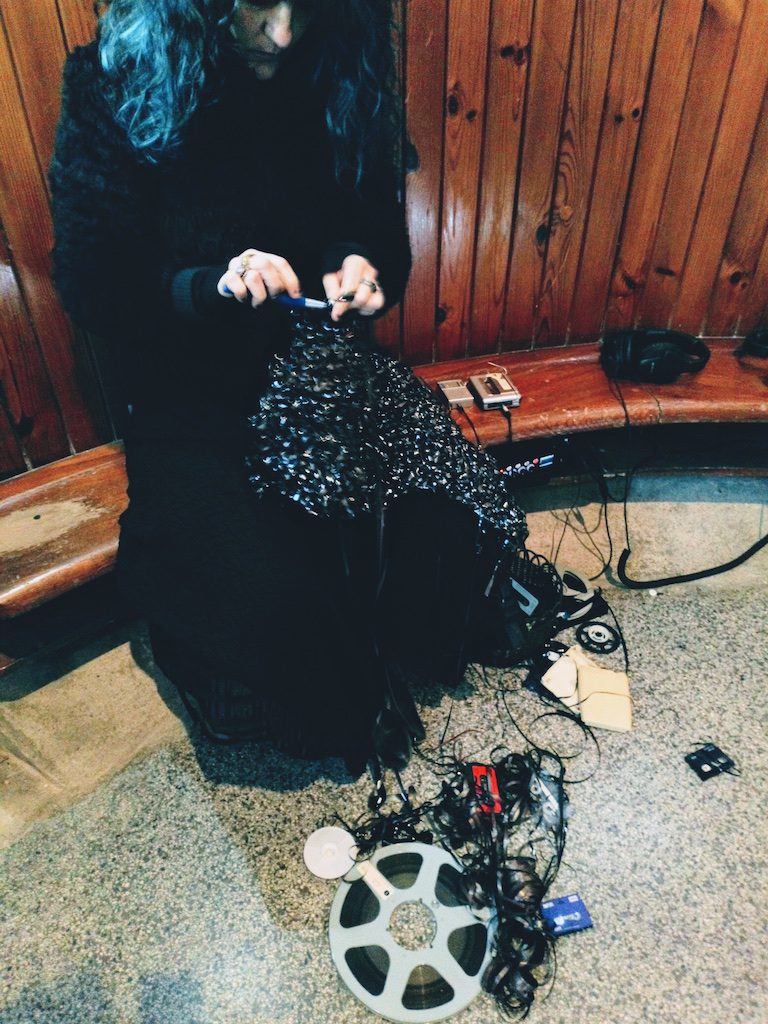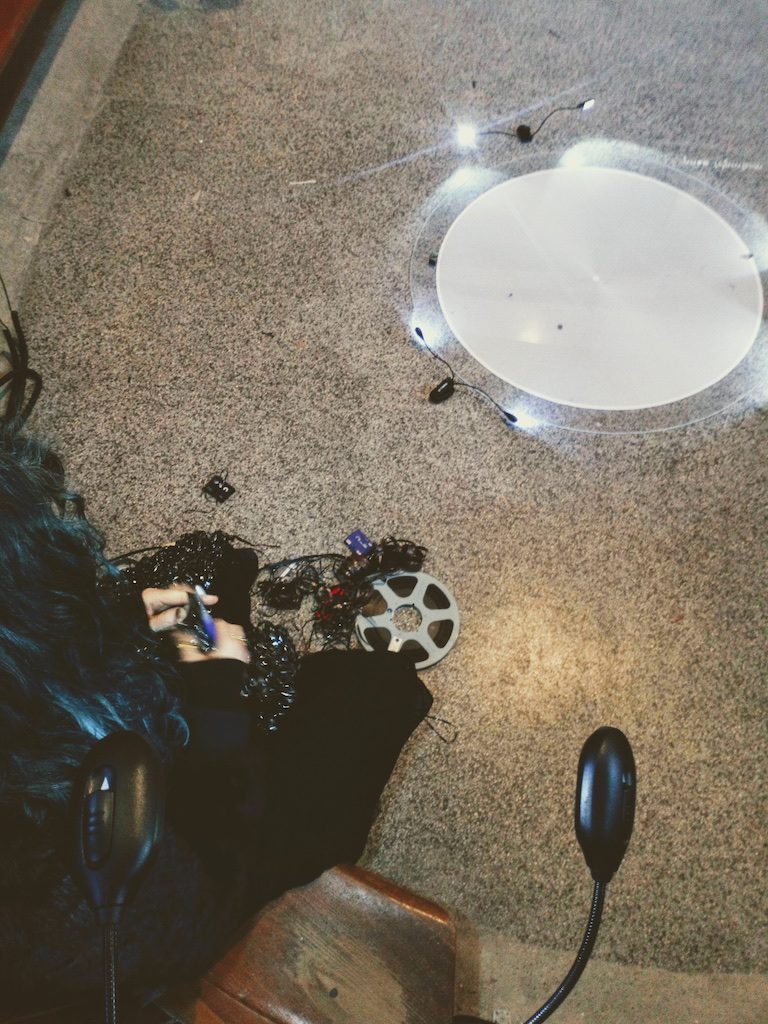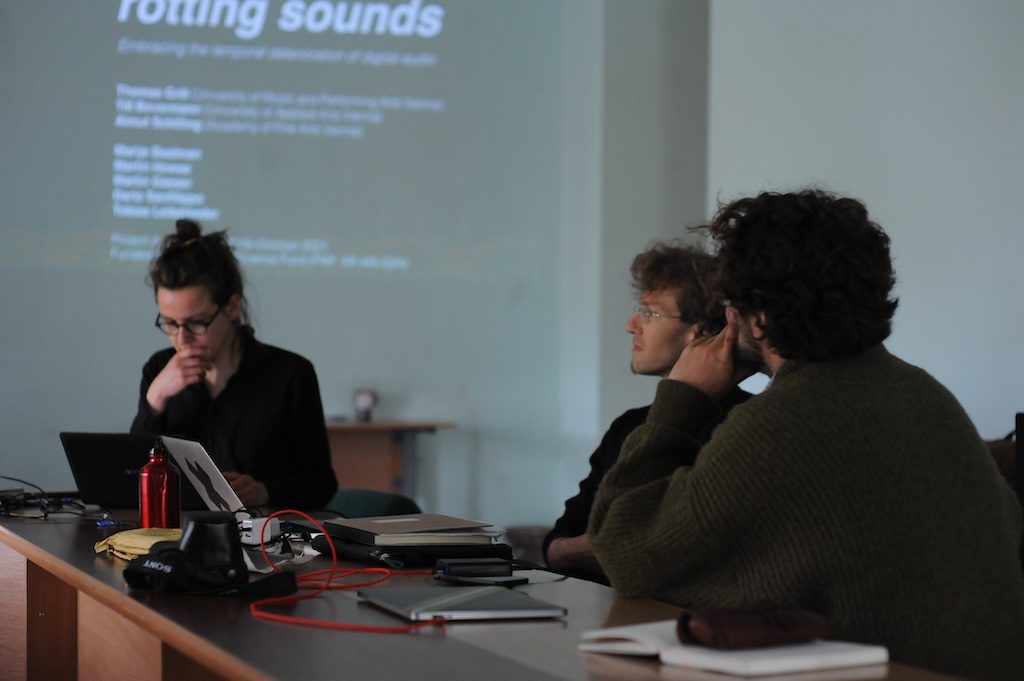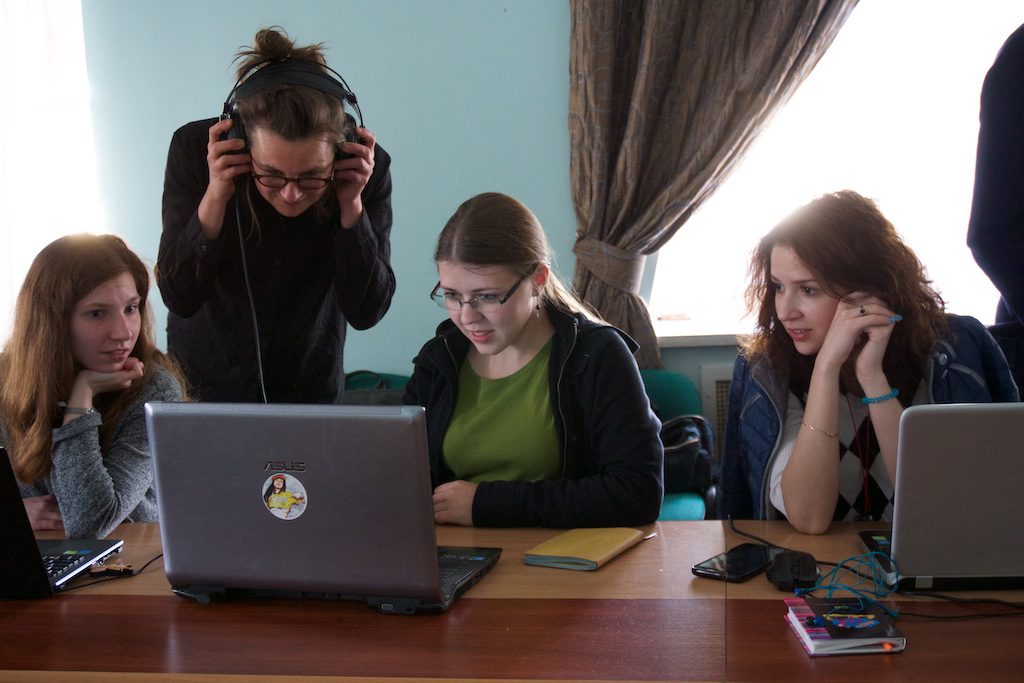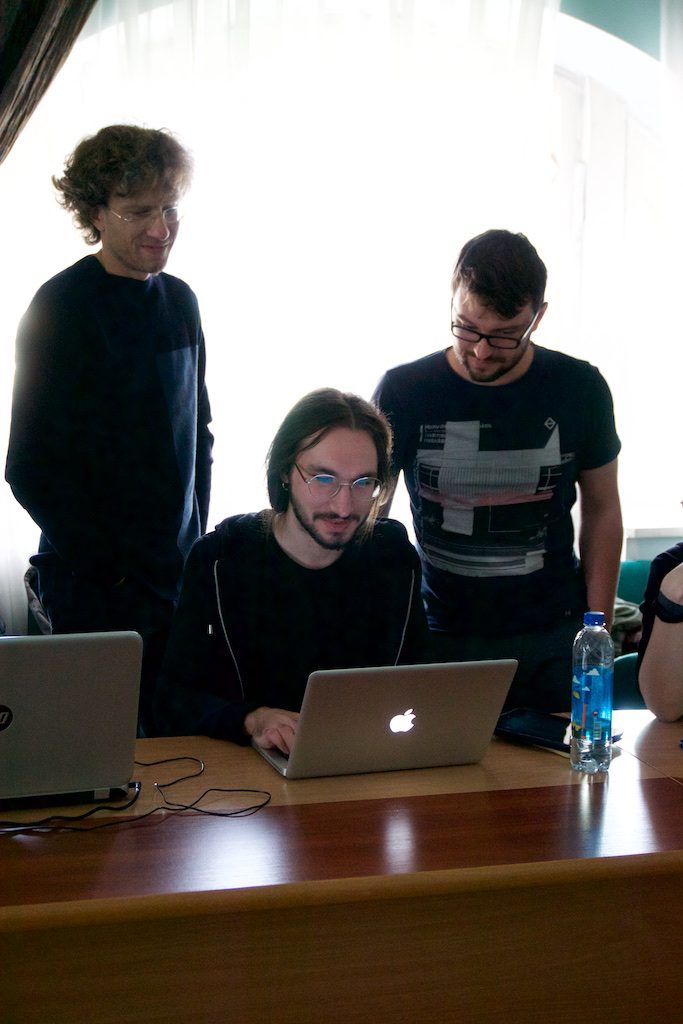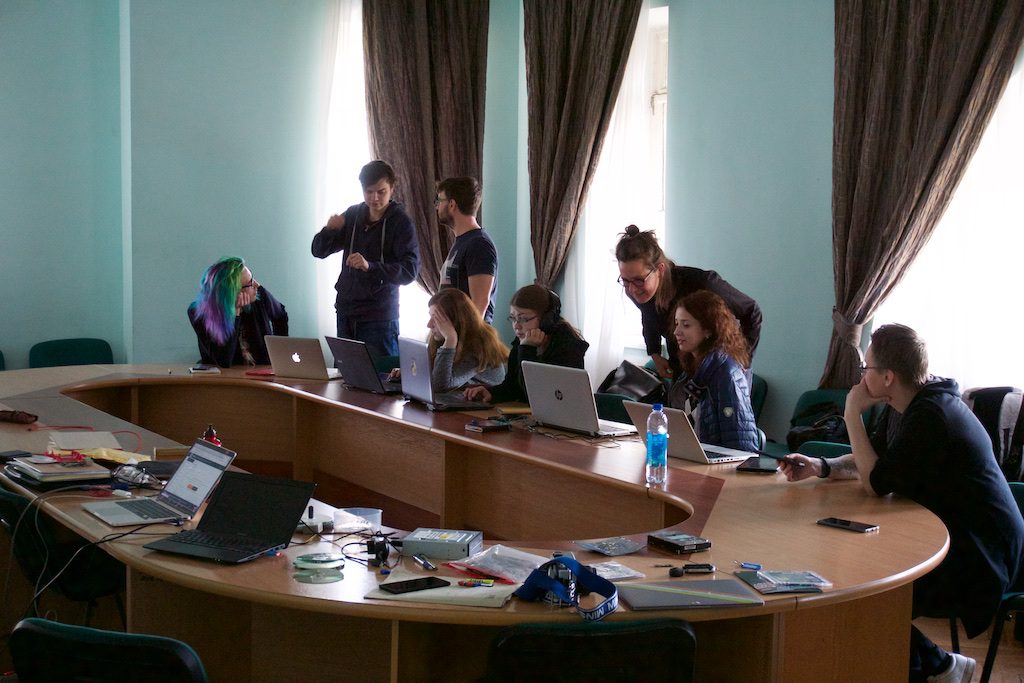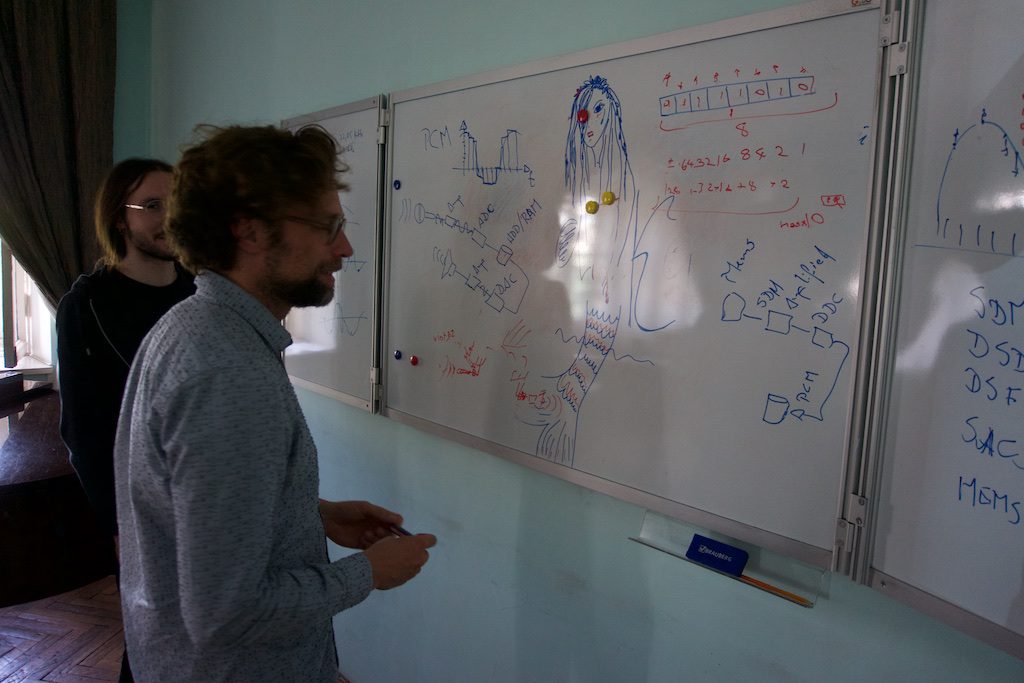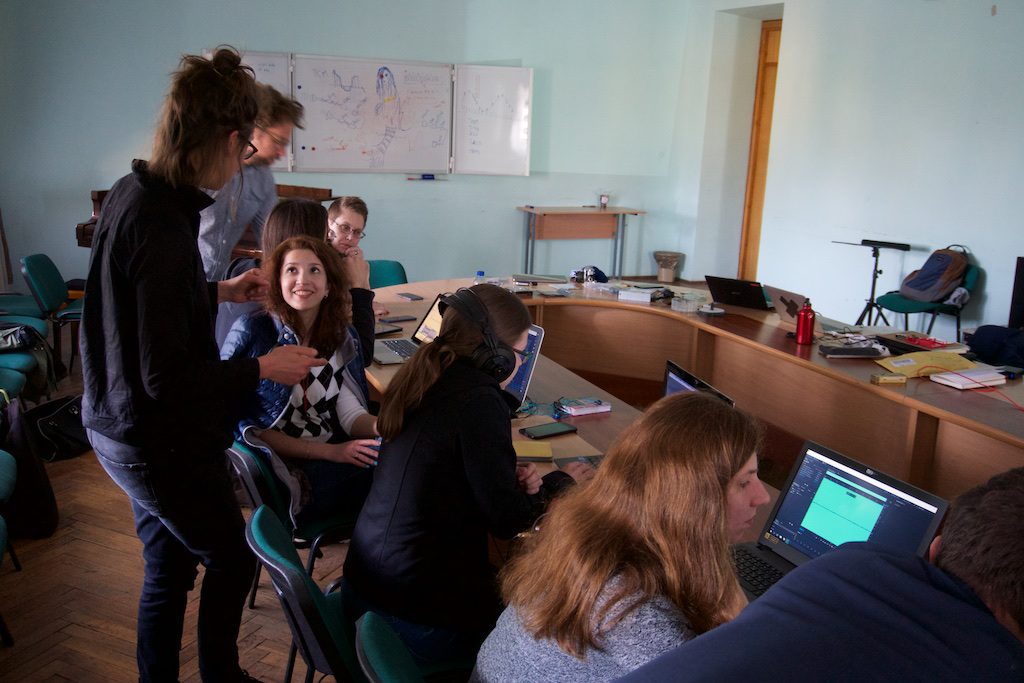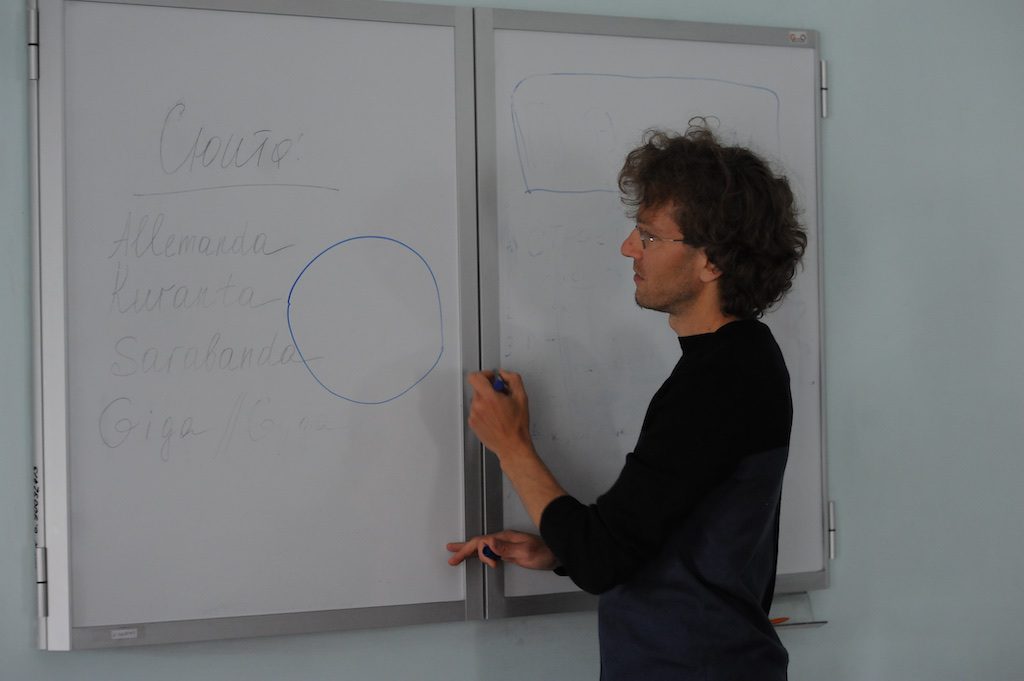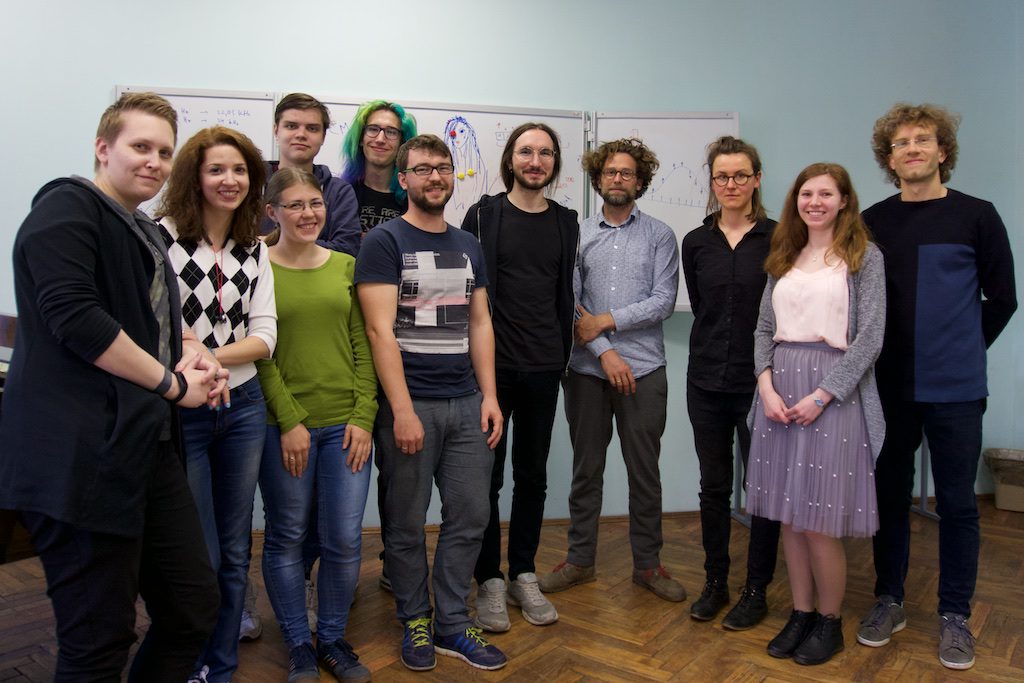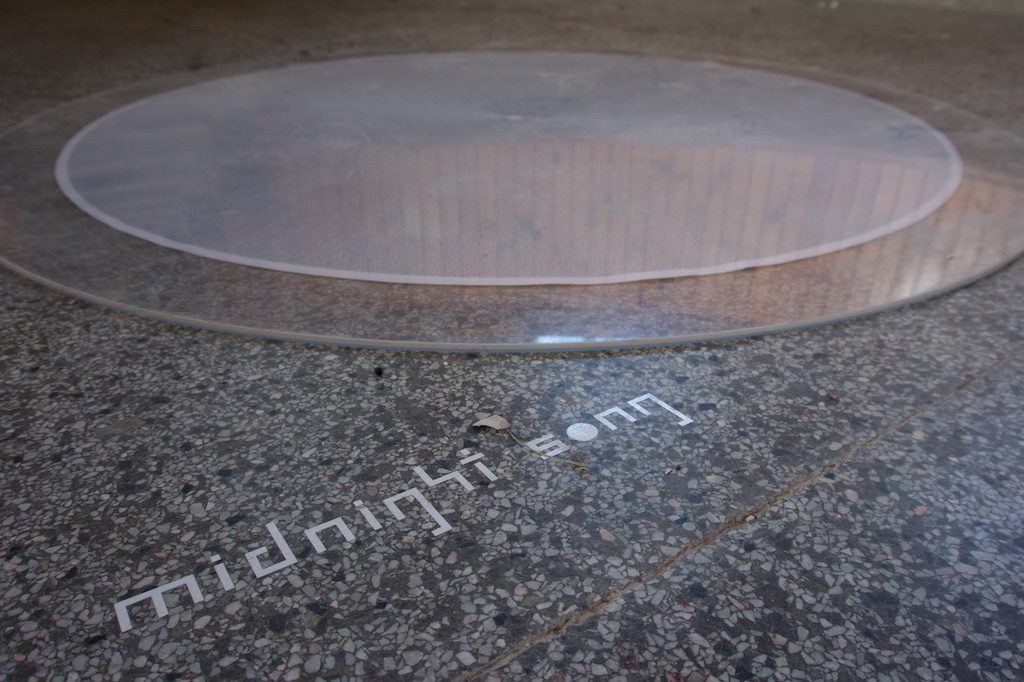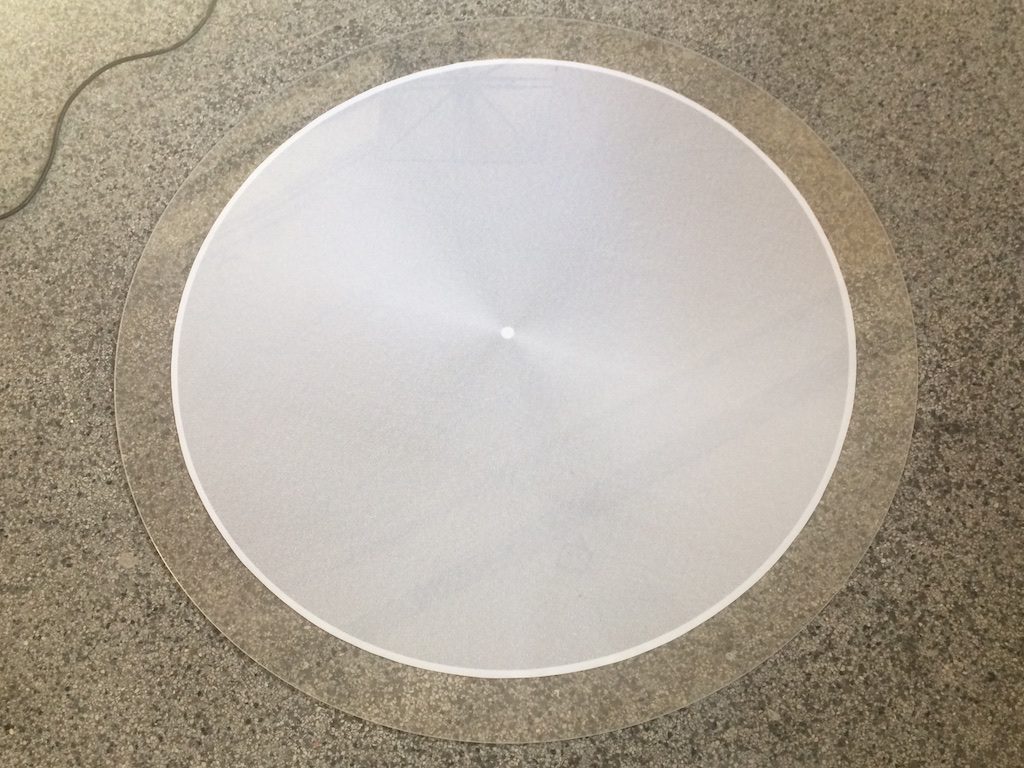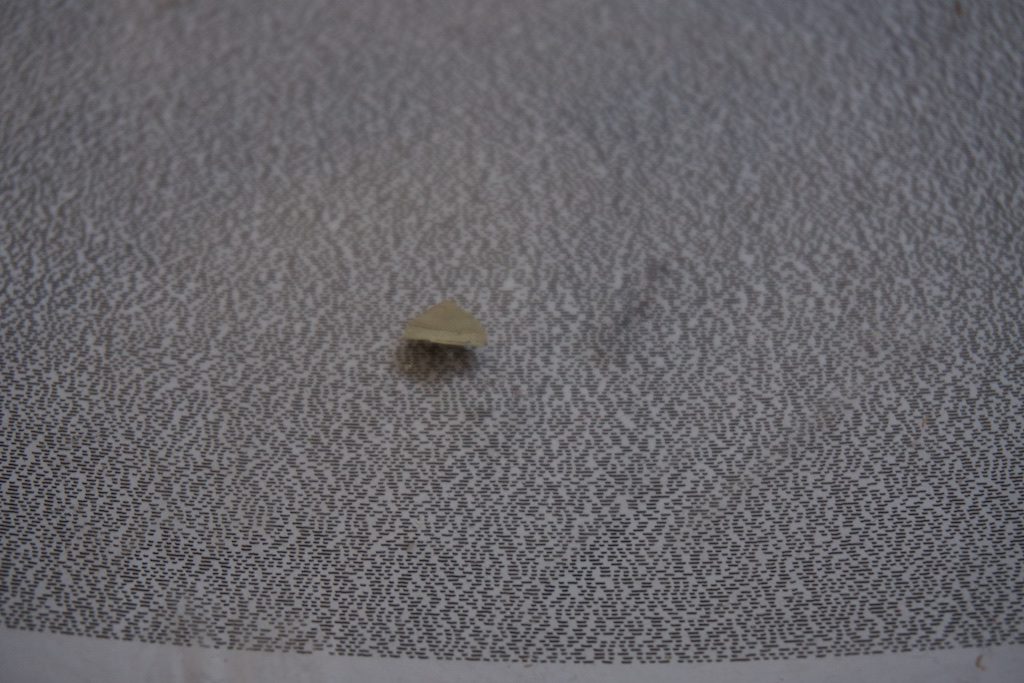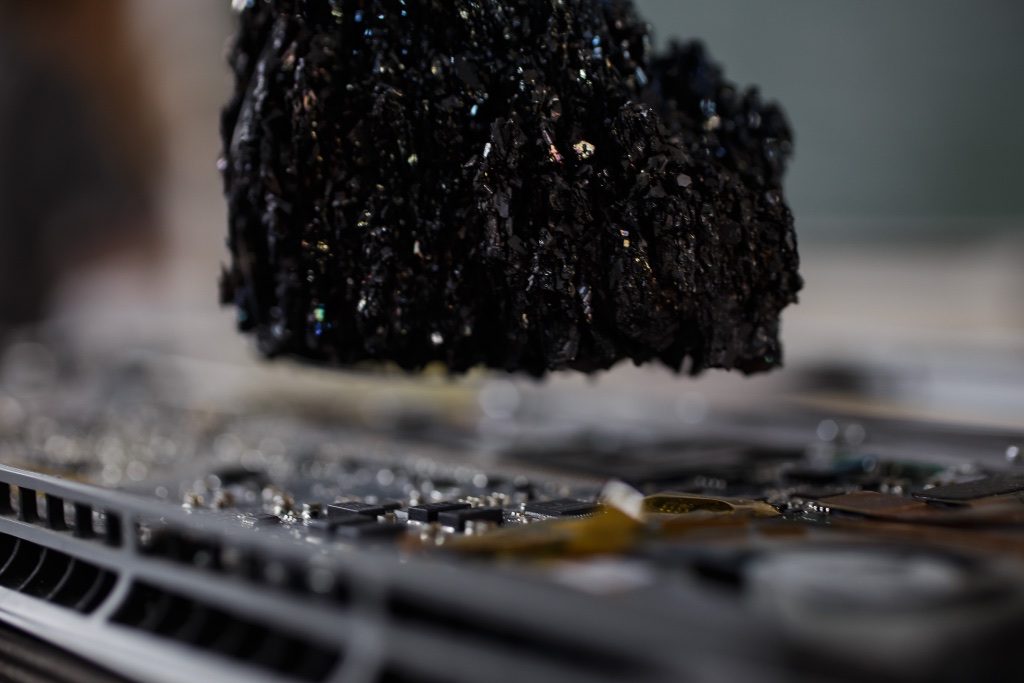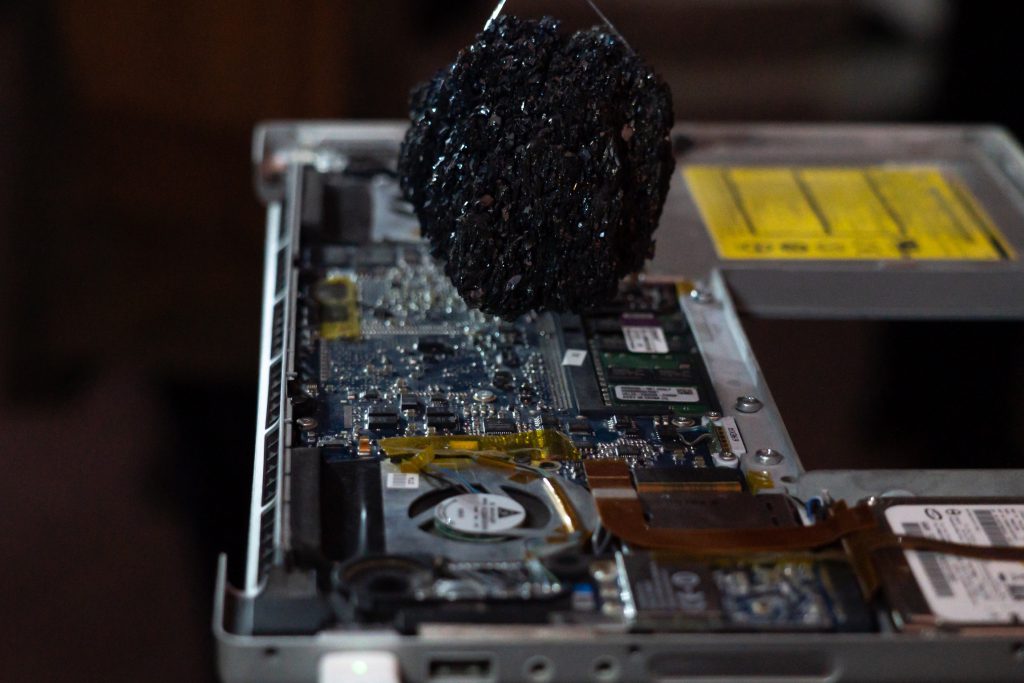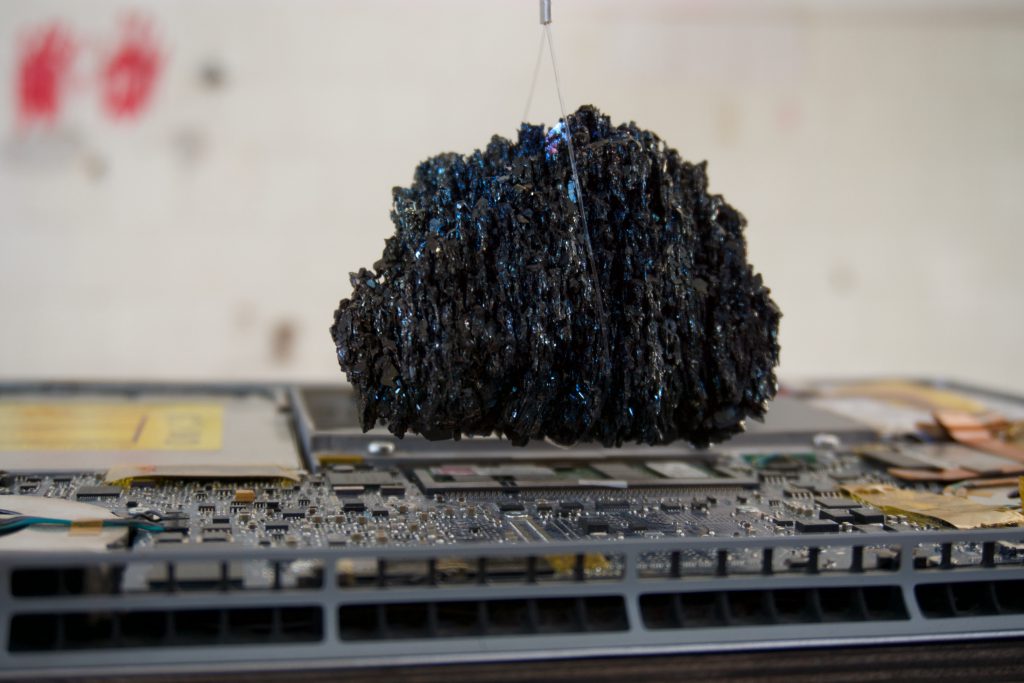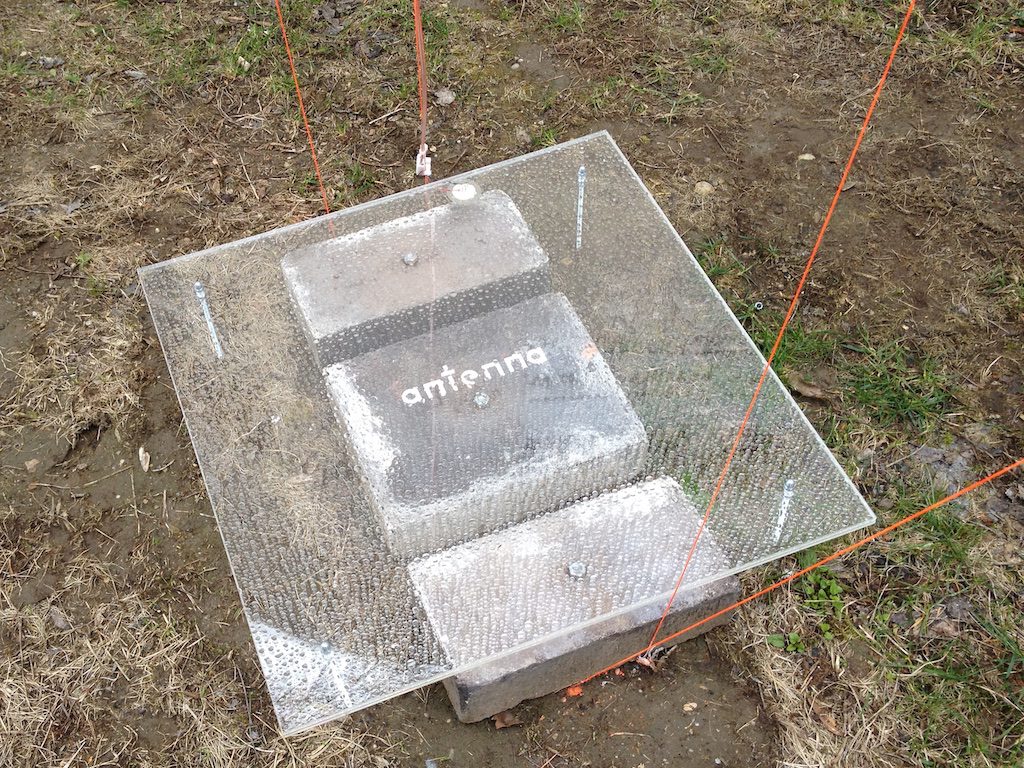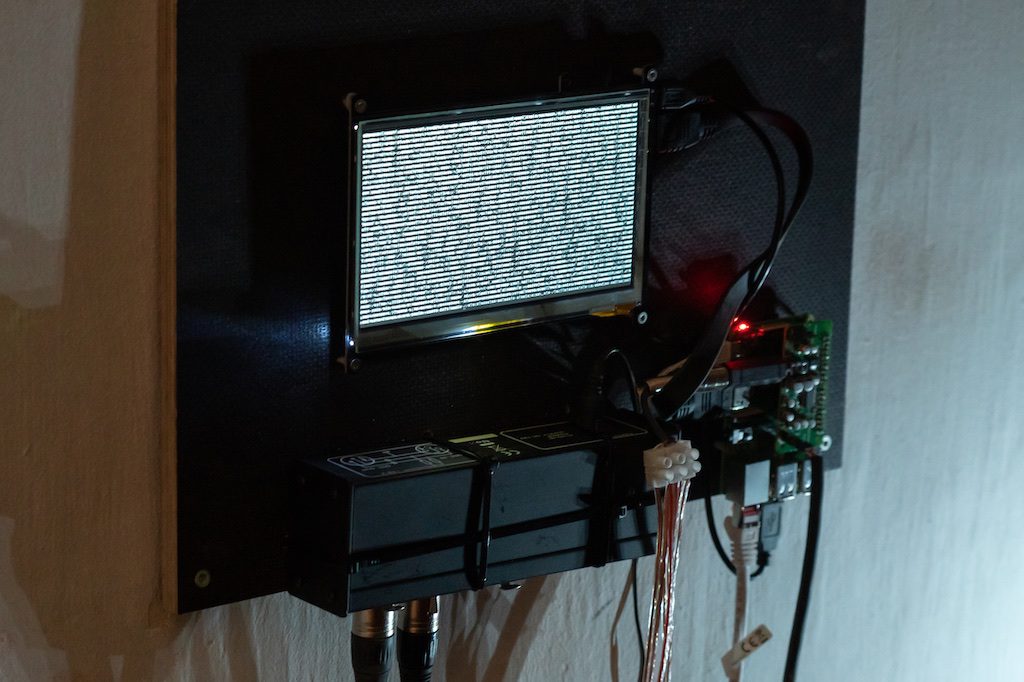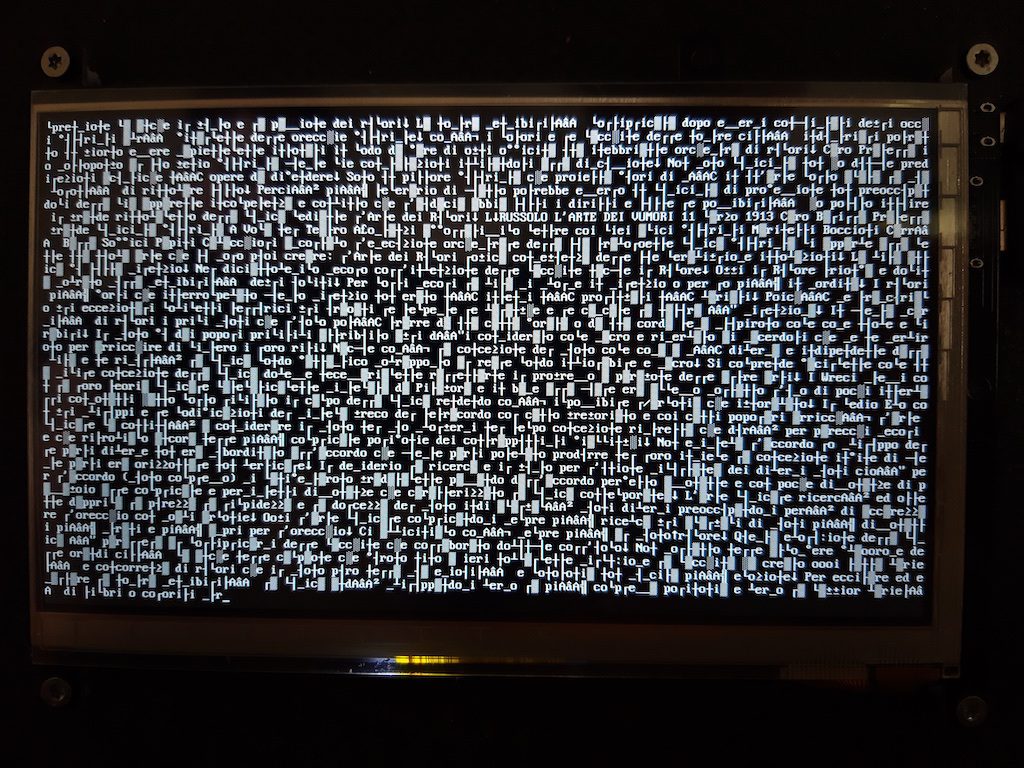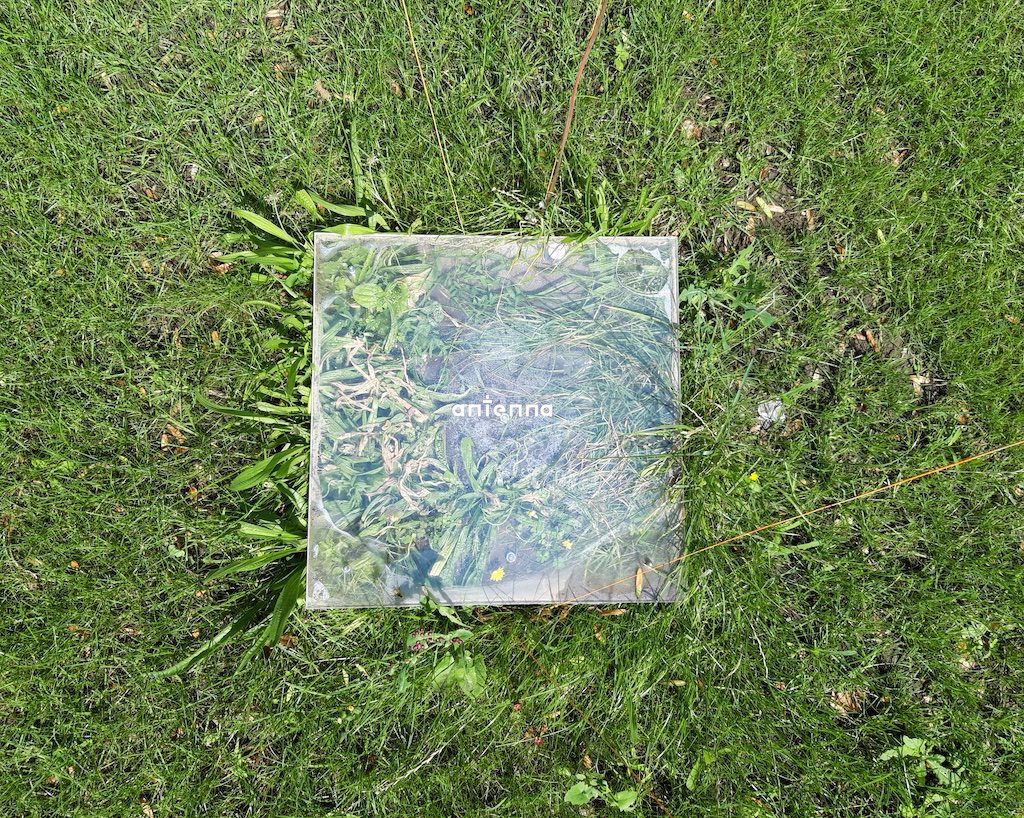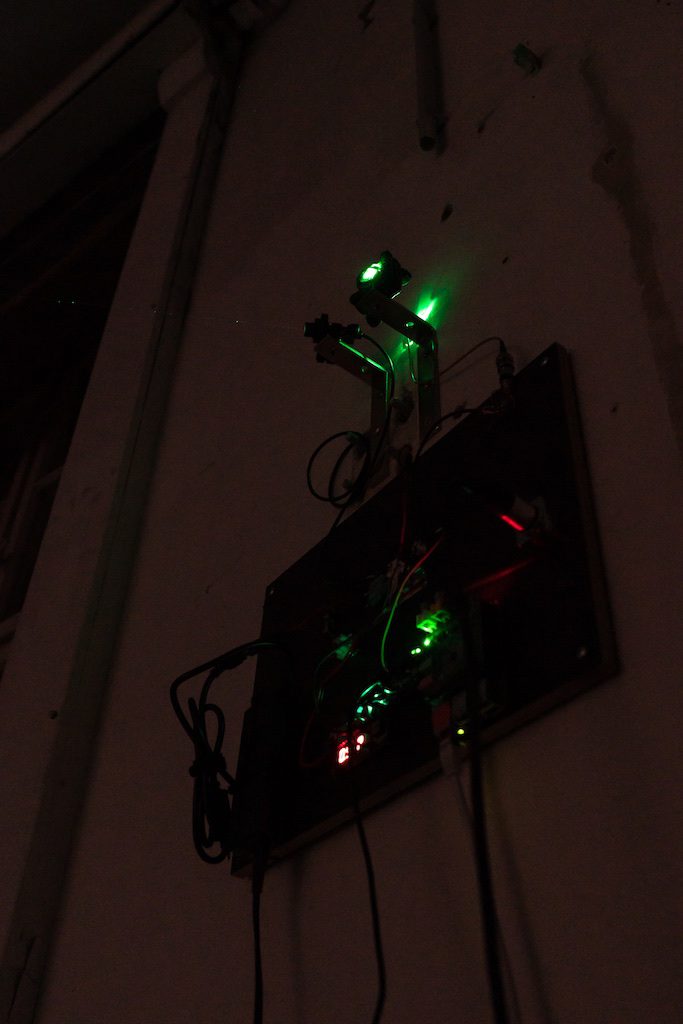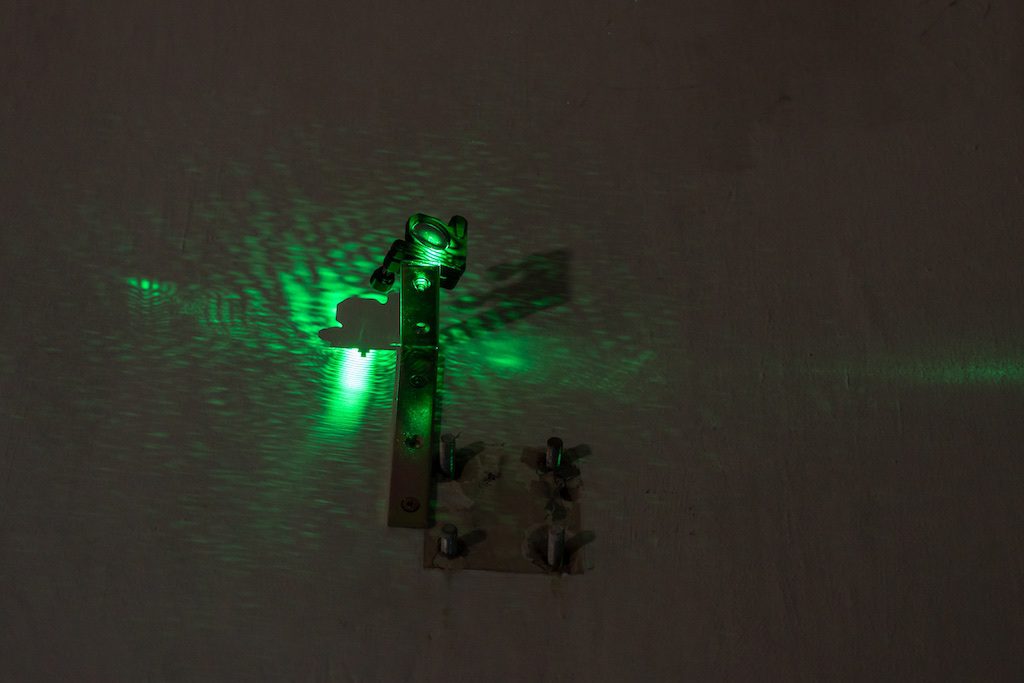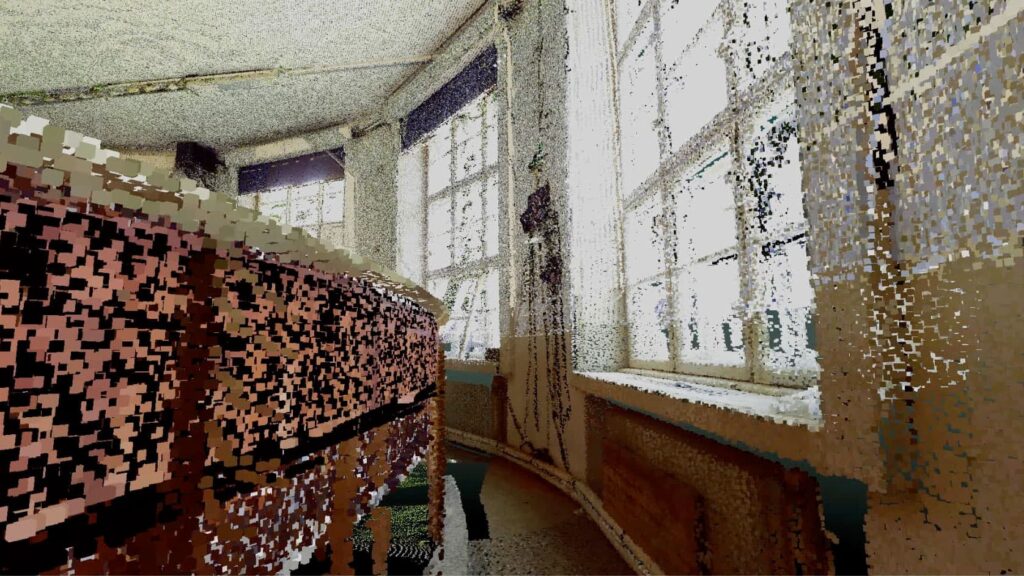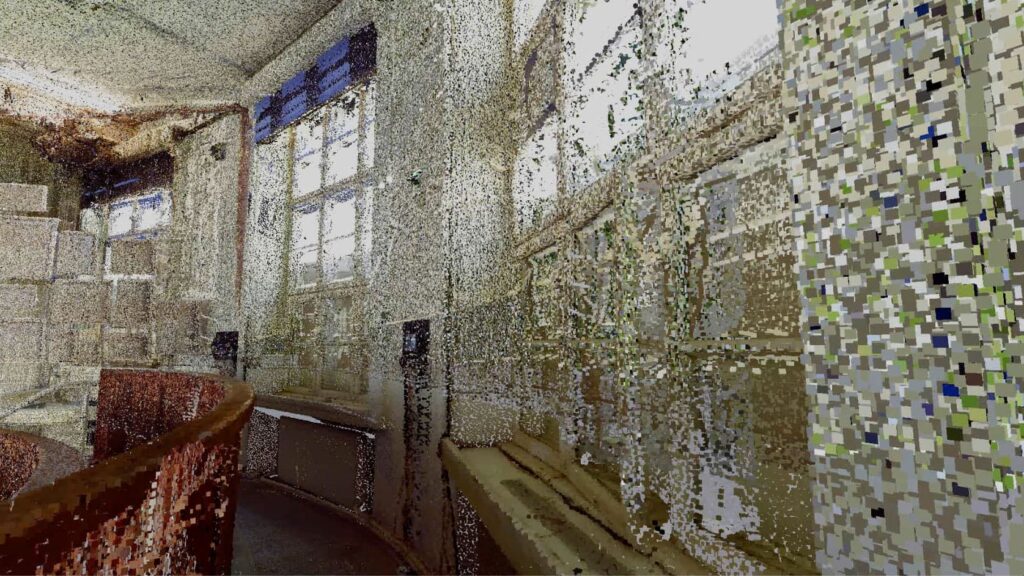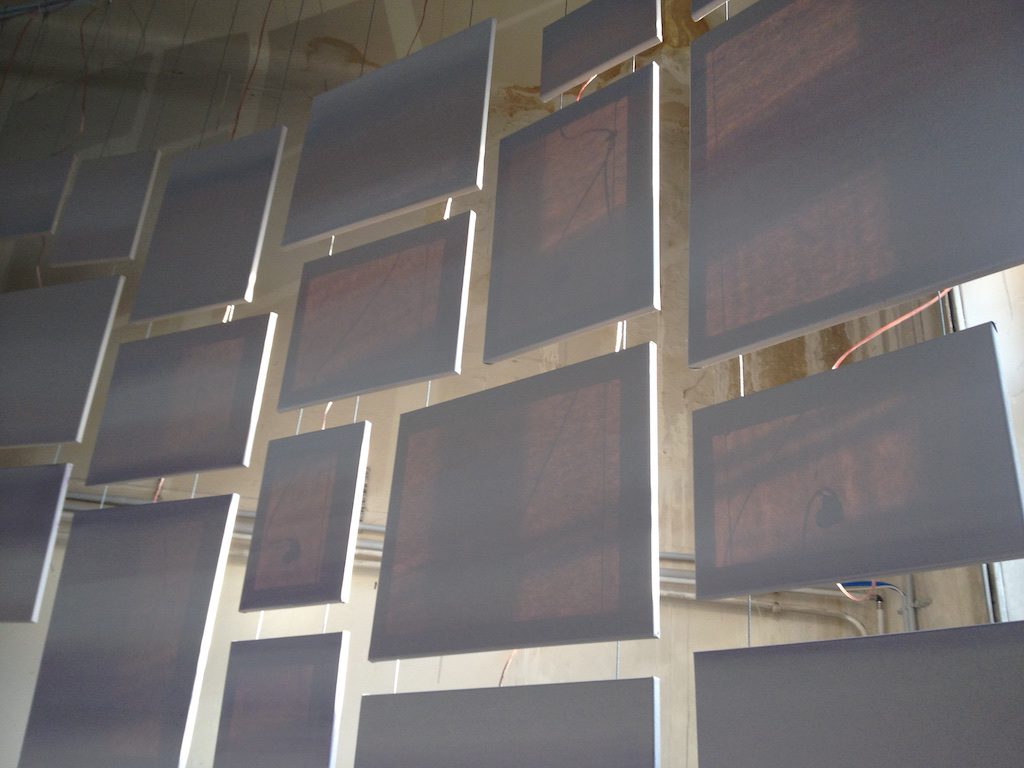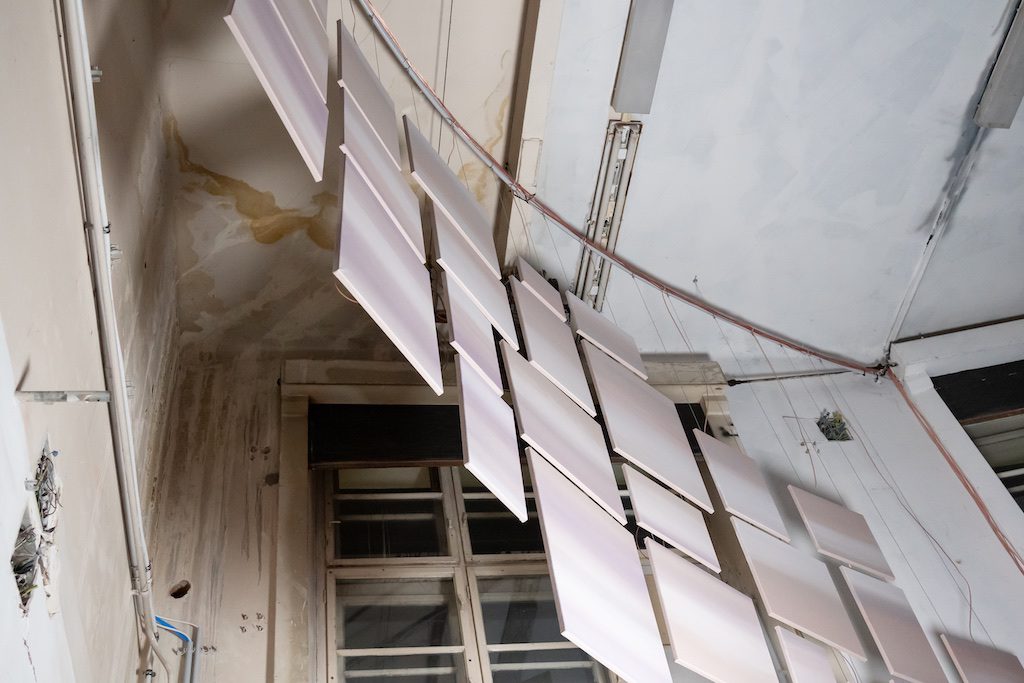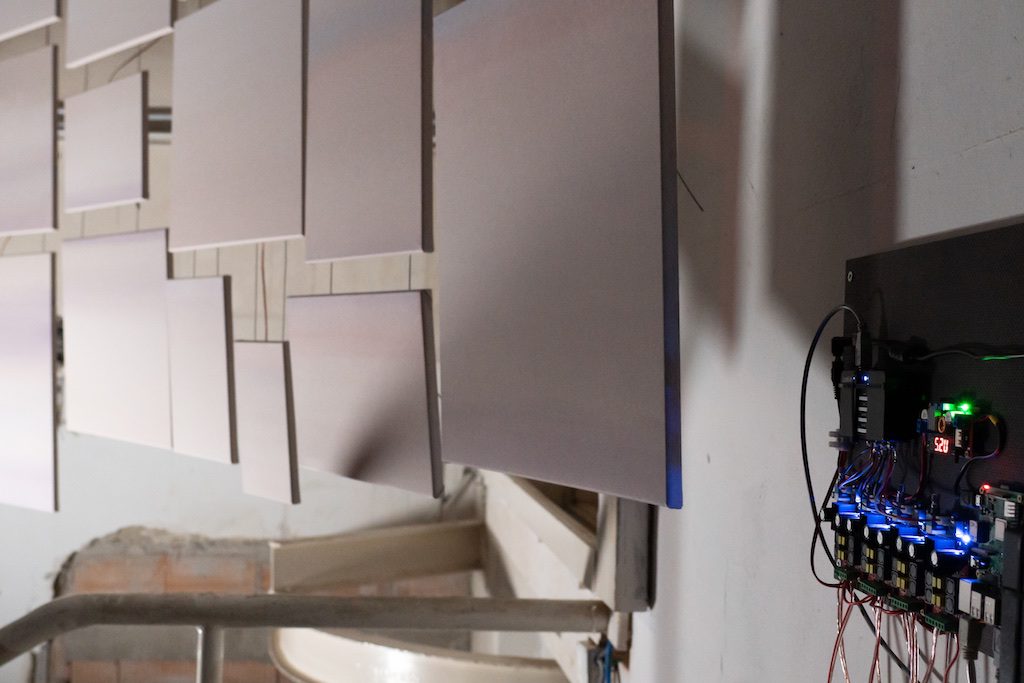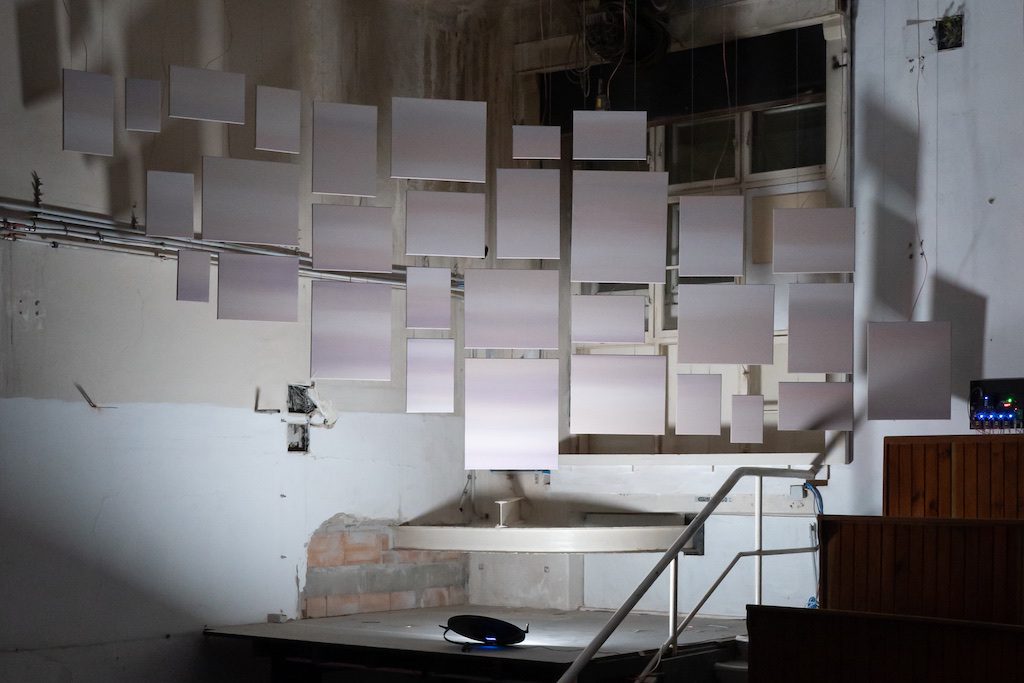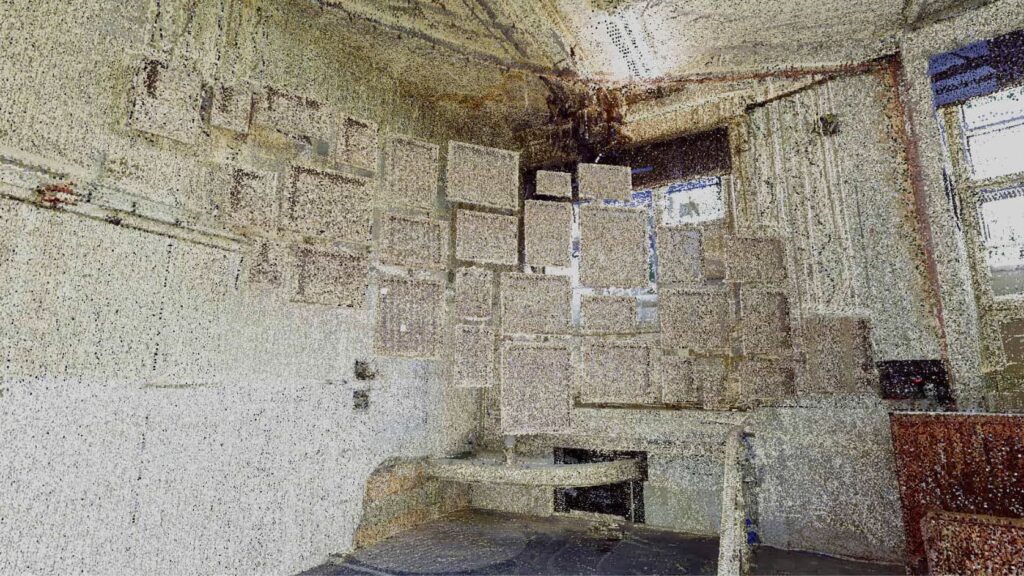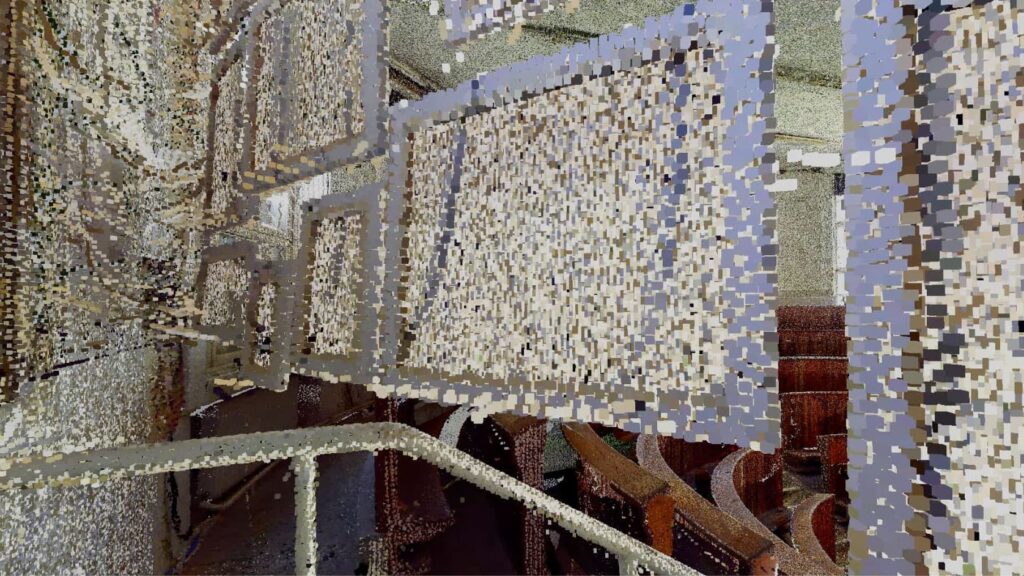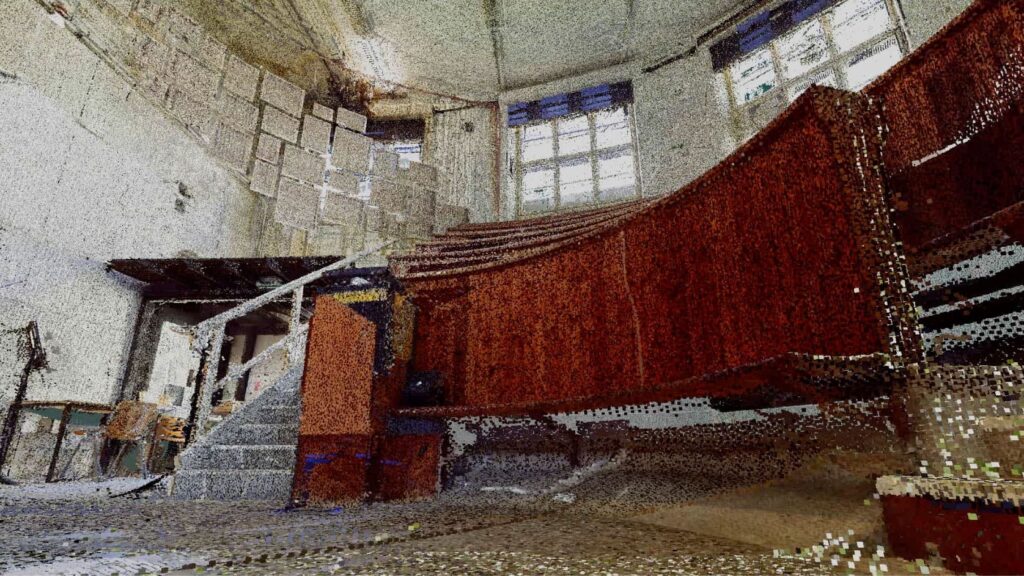Search Results for: thomas grill
Performances at the Auditorium: “Fragments”, October 2
The performance evening will revolve around Tobias Leibetseder‘s processual and constantly changing sculpture “Fragments“. It is in permanent development and consists of artifacts of the Rotting sounds research process. Waste, things collected, things stored and put aside, texts, pictures, data, sounds etc. are the basis of the shape-changing work. Object or exhibition, museum or archive, collection or documentation are moments of intrinsic research and decomposition, accompanying the process and resting in the distant but immediate eye of the observer.
Tobias Leibetseder‘s performance Transformation 1 is a transformation step and insight into the process of fragments. Artifacts as materials and sounds are transformed into new shapes and synthesized in a performative and concert act.
Angélica Castelló will present a performance based on recordings of her performance “Magnetic litany” from the opening evening of the Auditorium of Rotting sounds on March 29, 2019. It is connected to the permanently exhibited object “Magnetic Room“.
Elisabeth Flunger and Thomas Grill will jointly improvise on material and digital scrap. Everything seemingly valuable today will eventually transform into scraps. We take it as an aesthetic option.
October 2, 2019 19:00
Auditorium of Rotting sounds (Altes Auditorium)
University of Music and Performing Arts Vienna
Anton-von-Webern-Platz 1, 1030 Wien
As the audience will have to be limited, admission is on personal registration only.
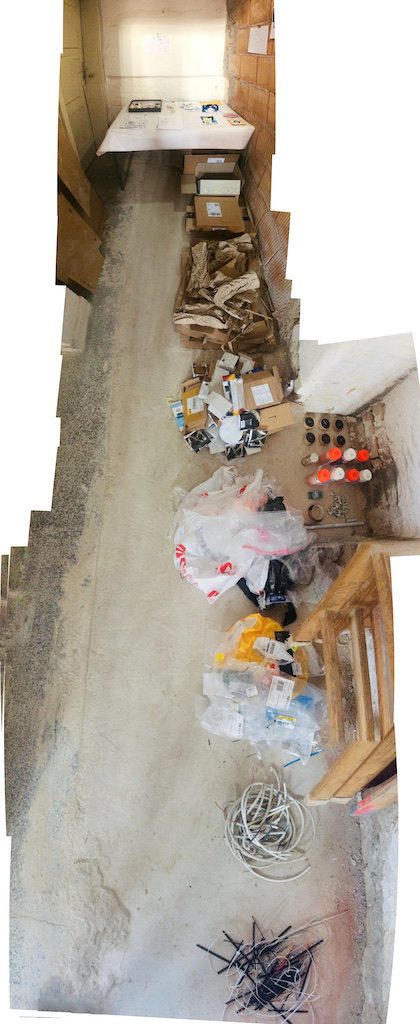
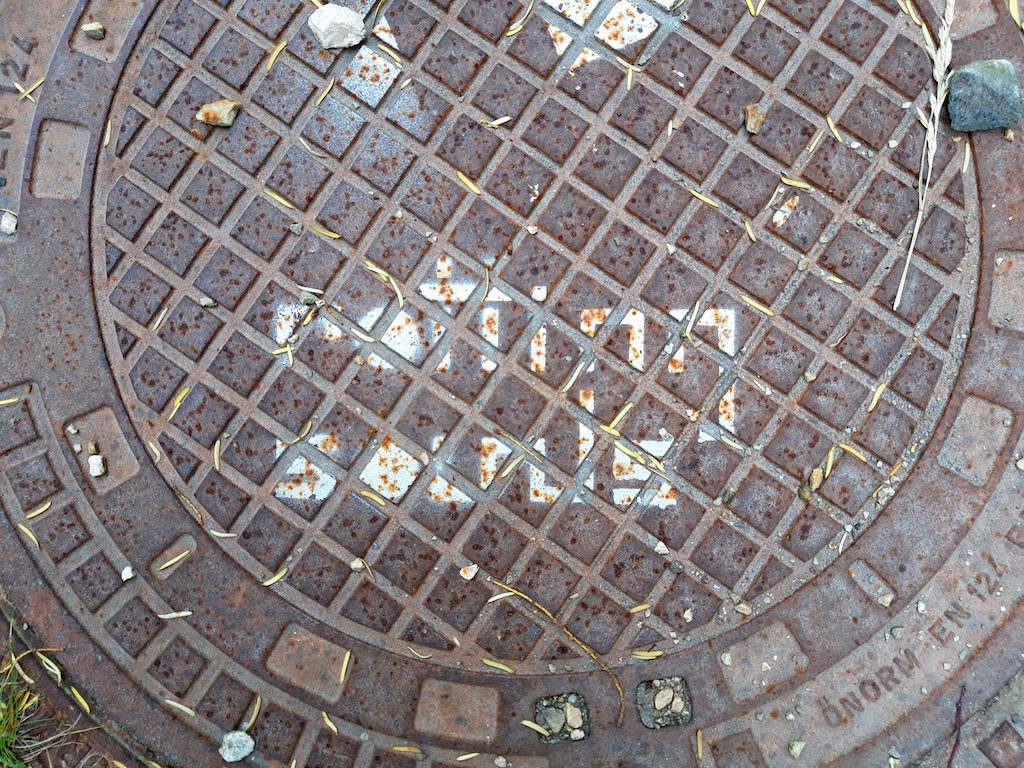
The pieces Magnetic litany 1 and 2 by Angélica Castelló have been made possible by the support of El Sistema Nacional de Creadores de Arte (FONCA).

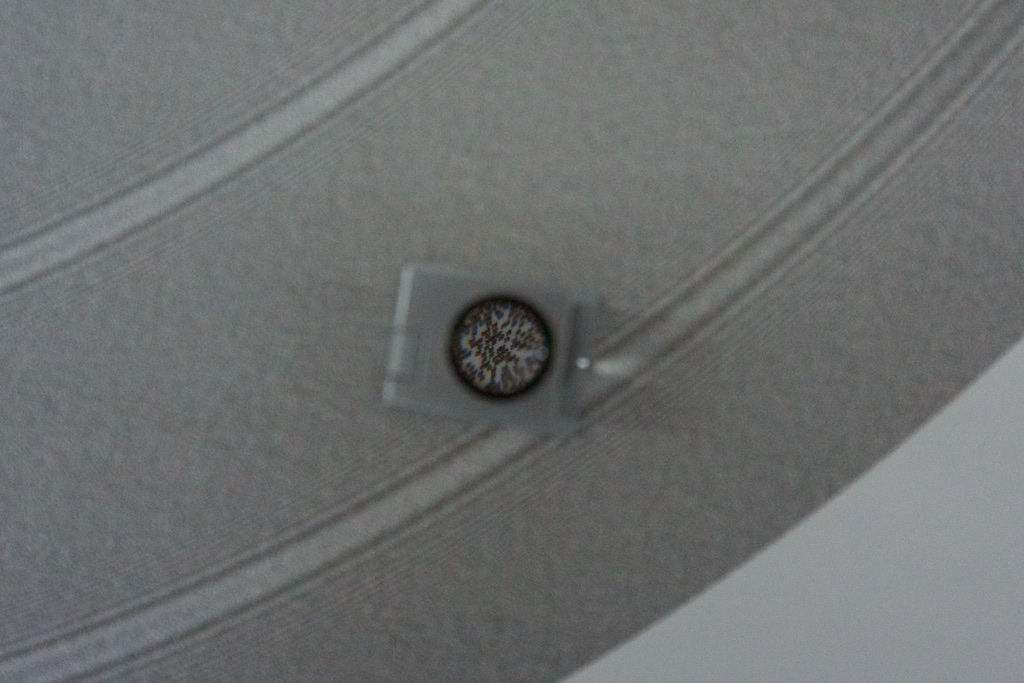
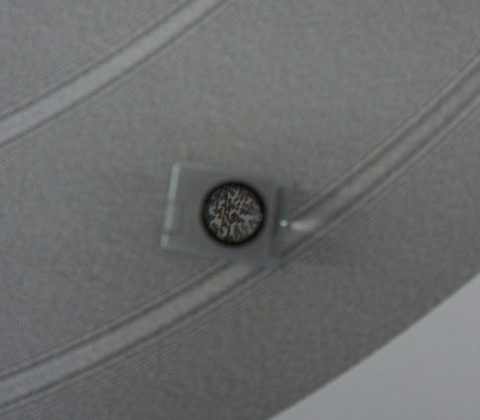
Reference Tone
by Thomas Grill, 2019
Sine tone 1 kHz @ -3 dBFS in 1 bit (DSD) audio encoding.
Representation as ink print on paper between acrylic glass.
This is a variation on the concept of the Midnight Song object as exhibited at the Auditorium of Rotting Sounds. In this case, the print embodies the representation of a pure sine tone represented as a high quality 1-bit audio encoding (DSD) at 2.8224 MHz sample rate. The bit stream is visualized as a spiral trail running from the center of the object to its outer rim. The object contains approximately 10 seconds worth of audio.

The above picture shows Reference Tone at its premiere at the UNDERSTANDING art & research exhibition in the Museum of Applied Arts (MAK) in Vienna. Placed at a transitory spot in the exhibition, the object (and with it the embedded sound) will only stay pure and perfect for a certain time. Already at the opening evening, stains and scratches on the surface were noticeable, by visitors accidentally or purposefully walking over the object. Over the duration of the exhibition of one month, the audio content will transform from a “reference tone” into a noisy sound being influenced by the context of its placement.
Digital audio vs. Compact Cassette – performance at the CCNL exhibition, June 13
We are delighted to take part in Wolfgang “Fadi” Dorninger’s exhibition “Cassette Culture Node.Linz” again, this time taking place in Vienna. The exhibition under the theme of “contact, document and exchange” elaborates on the cassette sharing culture having been extremely active in Linz in the 1980s and 90s.
Thomas Grill and Angélica Castelló will perform a multi-part set, combining their individual approaches using compact cassettes and players. Thomas will confront analog tape with digital sounds, using the medium as a transformation apparatus.

Rotting sounds masterclass at Herzen University, St.Petersburg, May 23
The “rotting sounds” researchers Thomas Grill, Till Bovermann and Almut Schilling were invited to conduct a masterclass at the Institute of Music, Theater and Choreography of the Russian State Pedagogical University A.I. Herzen, above all with the students of Andrey Bundin.
After an introductory presentation on the concepts of the research projects, we worked with/on “digital artefacts” that each of the participants brought to the workshop. The focus was on the notion of the “digital trinity”, we have established, consisting of storage material, information content, and interpretation.
Phase Transitions
by Dario Sanfilippo, 2019
commissioned by rotting sounds
production by Thomas Grill
Electronics, algorithm, transducers, resonant bodies
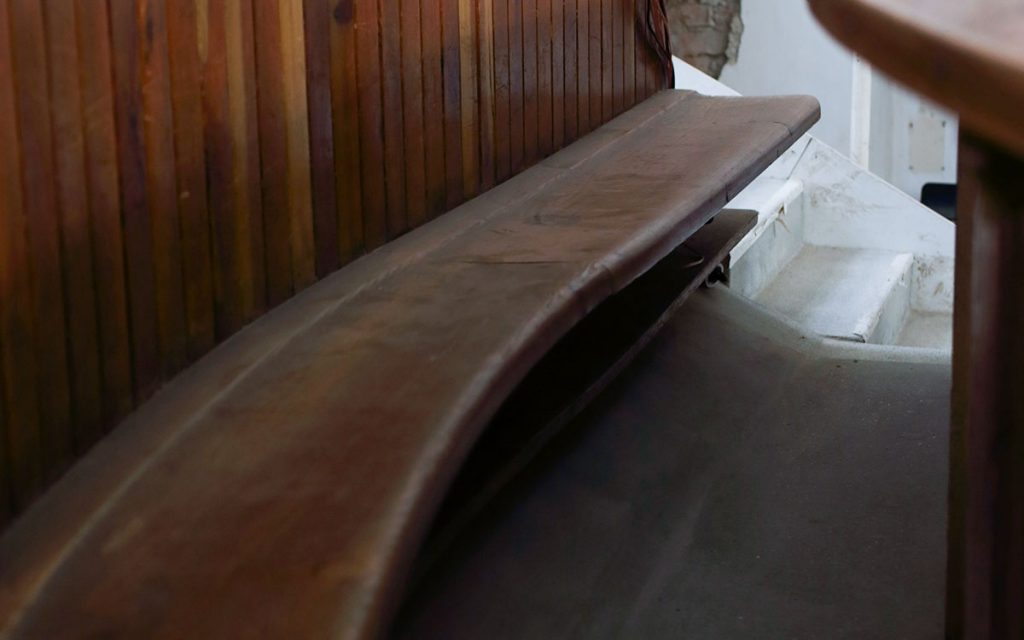
Phase Transitions is a long-form composition for an autonomous adaptive ecosystem operating in real-time which explores the idea of digital deterioration and the behavioural changes in dynamical systems with varying parameters. The work is based on feedback delay networks with nonlinear transfer functions, specifically, saturating units (also known as soft-clipping functions) whose purpose is to ensure stability in self-oscillating conditions but also to make the deterioration process possible.
Saturators transform signals so that amplitude values within a certain range are passed through almost untouched, while values outside that range are compressed never to exceed the limits of the saturators. The more the signals are far from the allowed range (so to speak), the more the signals are distorted (i.e., signals deteriorate), which results in more frequency components being added to the network.
The feedback coefficients determine how much of a signal is fed back into the network, while the lengths of the delay lines determine after how much time a signal will start to recirculate. The first parameter is responsible for the deterioration process as it affects the magnitude of the signals going through the saturators, which will also change the spectral output because of the added frequencies, while the second parameter is responsible for reinforcing or dampening specific frequencies in the spectrum. These are the two varying parameters in the system.
The delay lengths are chosen as powers of prime numbers. It is enough to know that that will favour a homogeneous distribution of the energy over the whole spectrum. The initial feedback coefficients correspond to the self-oscillating threshold of the network. It means that, after being initiated, the network could theoretically operate endlessly without any external energy being provided. In this case, the network is initially triggered by an ideally short impulse (a Dirac) that sets the system into an operating state, producing sparse tones.
The system is coupled with the environment through a microphone (input) and a resonating wooden bench (output). The signal from the microphone is processed so that some information is extracted and used to pilot the delay lengths. The analysis window of this process is one hour. It means that there is no immediate cause-effect relationship between what happens in the environment and the output of the system: theoretically, a perturbation in the environment will reach its maximum effect after one hour, but the system’s output is continuously affected by the past environmental conditions.
The feedback coefficients are set to grow of a magnitude of 2 in about three months. Roughly, that is the limit after which the saturators will be full and will have no further effect except producing broadband noise. That is indeed what sets the life span of the system.
A nonlinear system with several interacting feedback loops and varying parameters is expected to generate phase transitions. These are a radical change in the state of the system, and they show particularly rich and nontrivial dynamical behaviours. The last and perhaps most important aspect of the work is an adaptive mechanism for the growth of the feedback coefficients used to explore microscopically such behaviours: when a phase transition is detected, the feedback growth is radically decreased to almost freeze the current state variables until the transition is over. Interestingly, the detection process itself can either trigger or suppress a transition, resulting in a system that, by observing itself, will also affect its behaviour, which is what generates the formal development of the piece.
Archive
You can find archived sounds of the piece (1 min per hour) at the Rotting Sounds Archive.
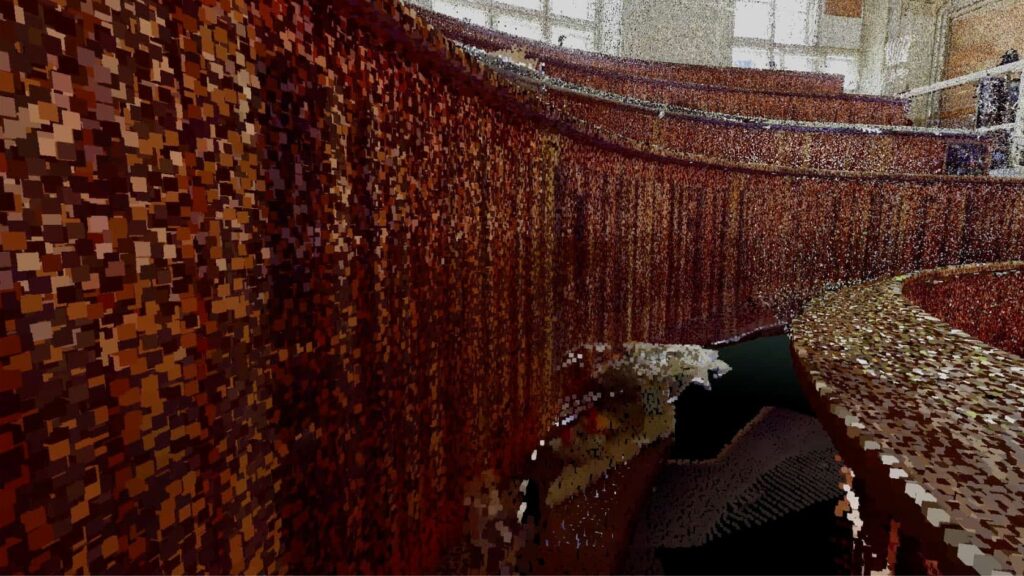
Midnight song
by Thomas Grill, 2019
Ink print on paper, acrylic glass
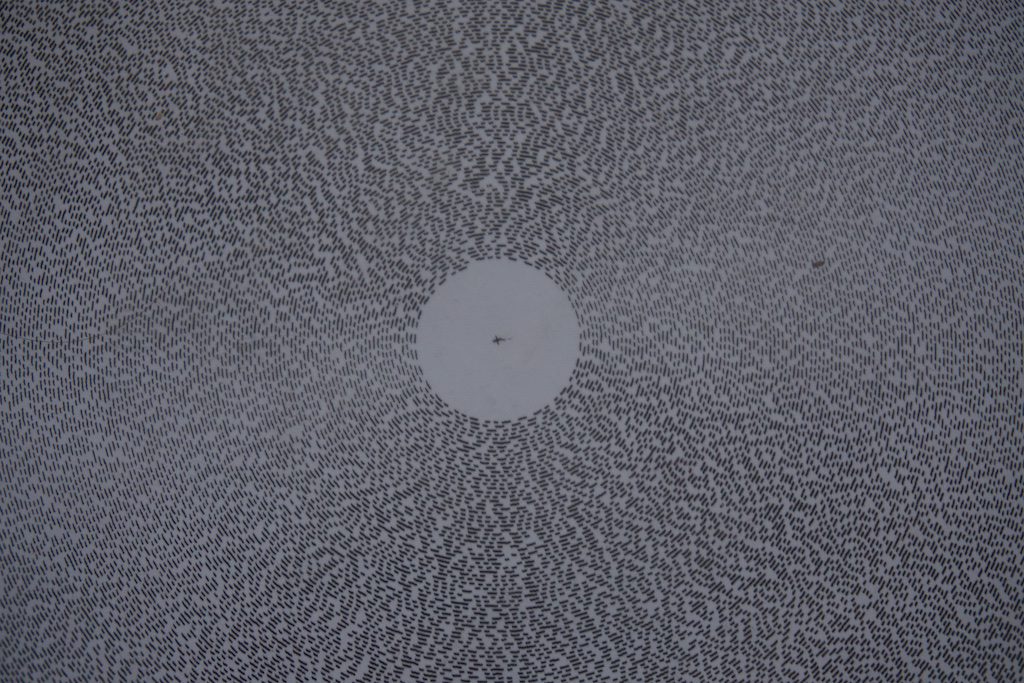
The work is a printed representation of the soundscape recorded at the auditorium at midnight of March 1st, 2019, the beginning of metereological spring. In the still of the night, a nightingale sings outside in the garden, its song leaking through the windows into the reverberant space of the auditorium.
The audio recording is in the form of a monophonic 1-bit encoding, a very high quality audio representation consisting of a stream of bits. The bit stream has been printed as a spiral of black and white segments, starting in the middle of the circle. It can be converted back to audio by a simple decoding process. However, imperfections in the print and through wear and dust on the acrylic glass will change the visual appearance over time, therefore also changing the audio content.
Intermission
by Mario de Vega, 2019
commissioned by rotting sounds
production by Thomas Grill
Operating System, script, silicon carbide crystal, electric power line
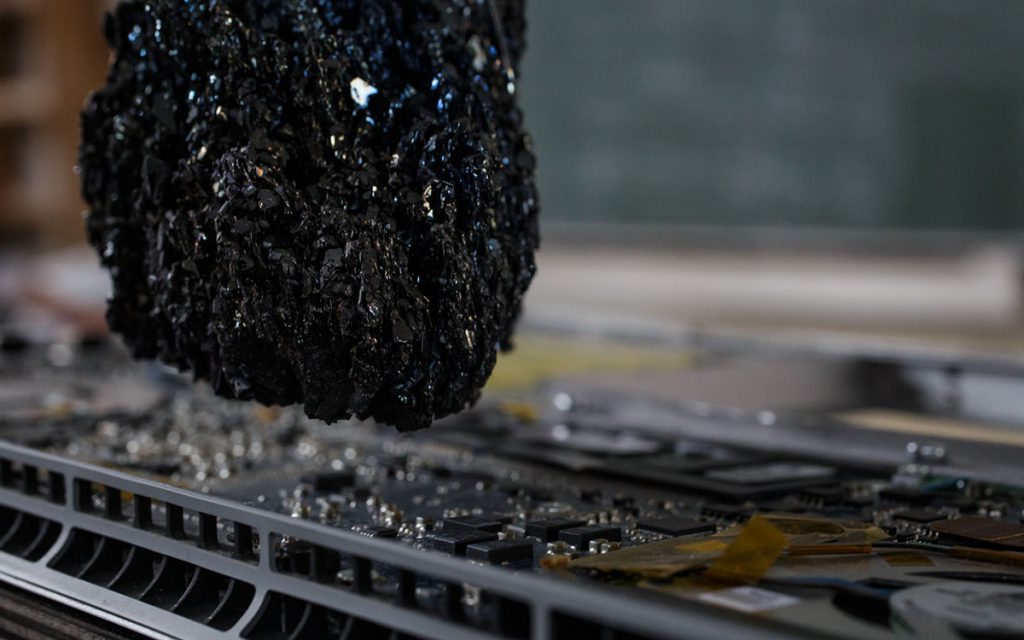
Intermission is composed of an electronic system and a rudimentary suspension mechanism. Its principle is simplified as code written to analyse and retard an audio signal using the microphone input and segments of a computer interface as engines. A piece of silicon carbide crystal, suspended from the ceiling, interacts with the feedback of the system itself, acting as a gate that increases and decreases the fluctuation of a digital signal.
Special thanks to Alberto de Campo and Hugo Esquinca.
Archive
You can find archived sounds of the piece (1 min per hour) at the Rotting Sounds Archive.
Antenna
by Juliana Herrero and Thomas Grill, 2018/19
commissioned by rotting sounds
Steel cable, color, acoustic transducers, digital sound processing, text
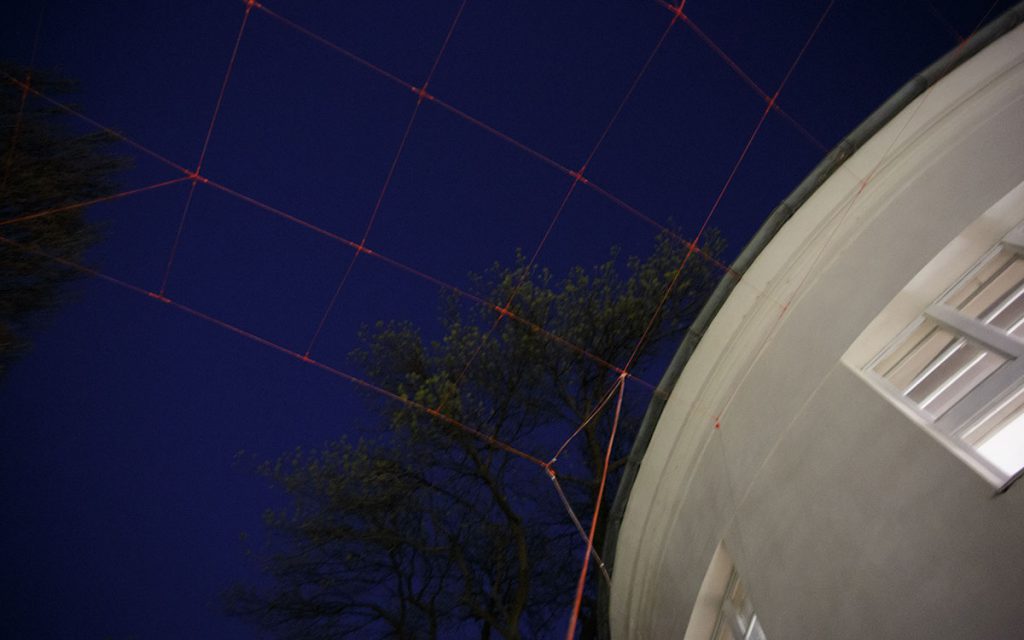
The “Antenna” installation creates an interface between sound and its environment. It transmits sounds generated from encoded text. These acoustic vibrations are resonating through the networked body of the artwork, amplified and broadcasted into the surrounding air. The artwork recites the text of “The Art of Noises” (L’arte dei Rumori), a futurist manifesto written by Luigi Russolo in a 1913 letter to his friend and futurist composer Francesco Balilla Pratella.
An audio codec translates the individual letters into musical chords, which are in turn sent over the wire sculpture. These vibrations are modified within the filigree structure by the environmental conditions — wind, rain, dust, birds sitting on the wire. At the other end of the wire network, the sounds are picked up again and translated back into text. This process can be followed on a small display. By the time, the environment of the sculpture inscribes itself into the text by disturbing single bits of the manifesto, slowly turning it from readable text into environmentally informed noise.
Archive
You can find archived sounds of the piece (1 min per hour) at the Rotting Sounds Archive.
dust a bit
by Klaus Filip and Thomas Grill, 2019–2021
commissioned by rotting sounds
Digital audio via laser beam
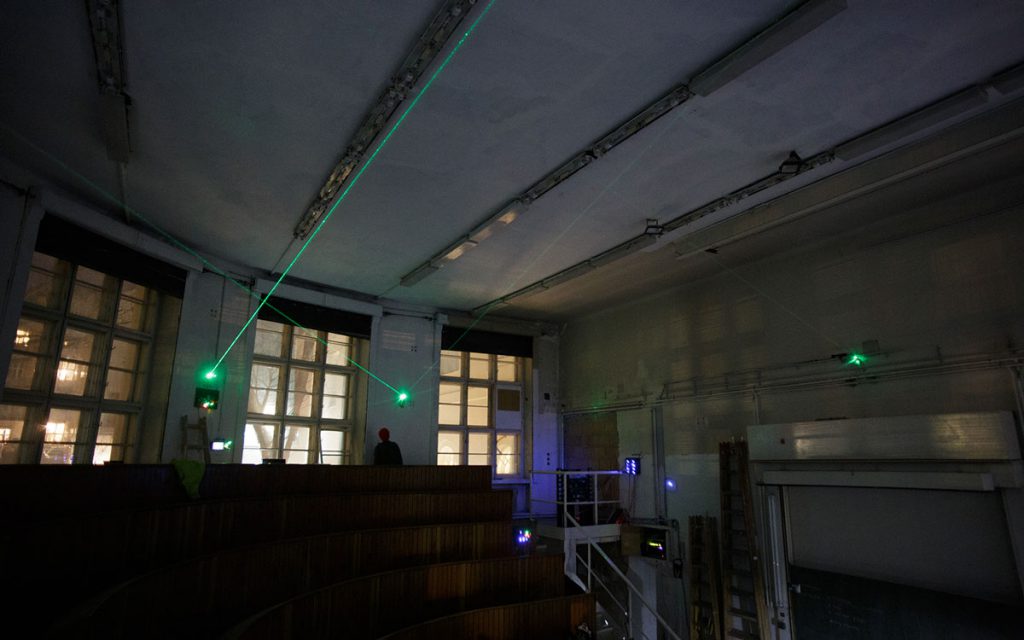
A musical motif in just intonation consisting of pure sine tones serves as starting material. It modulates the intensity of a laser beam. The laser is sent through the room with a mirror several times and finally directed to a phototransistor. On its way through the room, the optical signal is disturbed by the dust present in the air. Individual bits are changed. The dusty bitstream overwrites the memory of the original signal, is sent to the source material and again through the room.
This is repeated over hours, days and months and can be heard via headphones.
Archive
You can find archived sounds of the piece (1 min per hour) at the Rotting Sounds Archive.
Fields of Haze
by Nicole Krenn and Thomas Grill, 2019
commissioned by rotting sounds
Paint on paper, generative audio composition
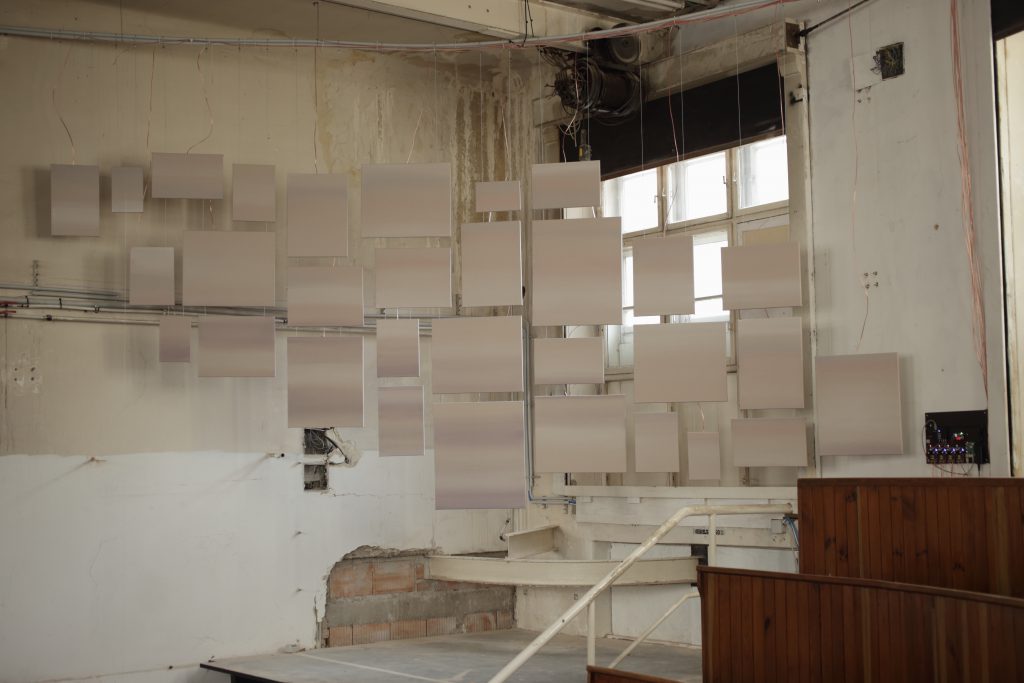
The installation “Fields of Haze” claims the western corner of the auditorium with 31 paper-covered stretcher hangers suspended from the ceiling. The pale color surfaces break the view to the back wall of the library of the Music University – where thousands of scores are stored – on the other side at this point notes for ensembles with several pianos. In very slow succession, chords seep through the wall and emerge through the mists. In short, they are clearly audible, but run quickly and spread out over the paper walls. Gradually, they blend into a vague tonal color that settles permanently in time and space.
Architecturally, the installation presents itself as a flatly dissected image of single images that spans the corner of the room, detached from the classical hanging on a flat wall. Through its permeability, it opens the room into the depth, but on the other hand, it offers a homogeneous radiating surface for the sound. At the same time, the paper carries both a visual and an acoustic color, in a movement that moves both spatially and temporally.
The piano chords represent the composition Véxations by Erik Satie (played by Jaime Wolfson), whose prescribed 840-times repetition at the chosen tempo would take several weeks. The individual sounds melt within a few seconds through spectral erosion processes, as they are also manifested in the MP3 compression and condense into swathes of digital sound vapor.
Archive
You can find archived sounds of the piece (1 min per hour) at the Rotting Sounds Archive.
